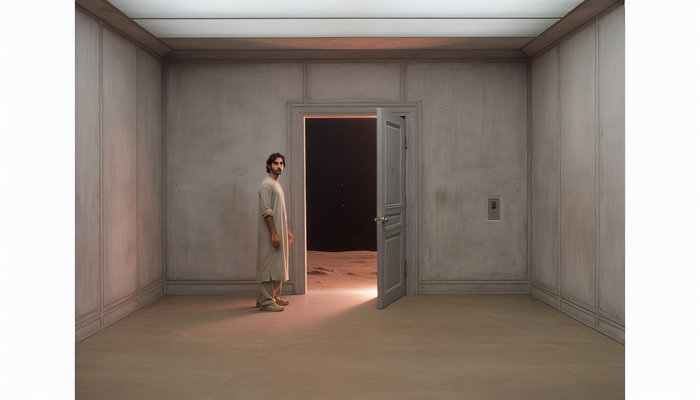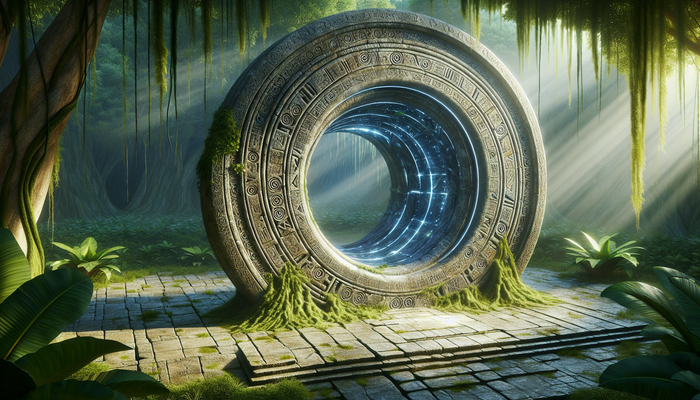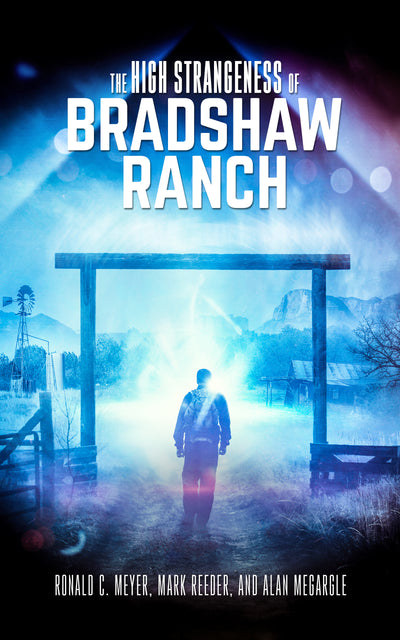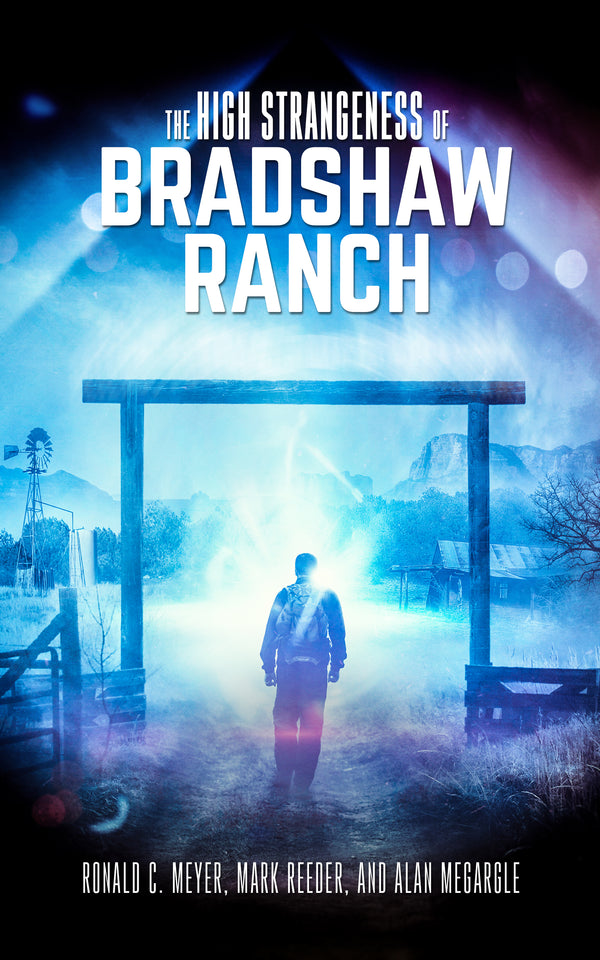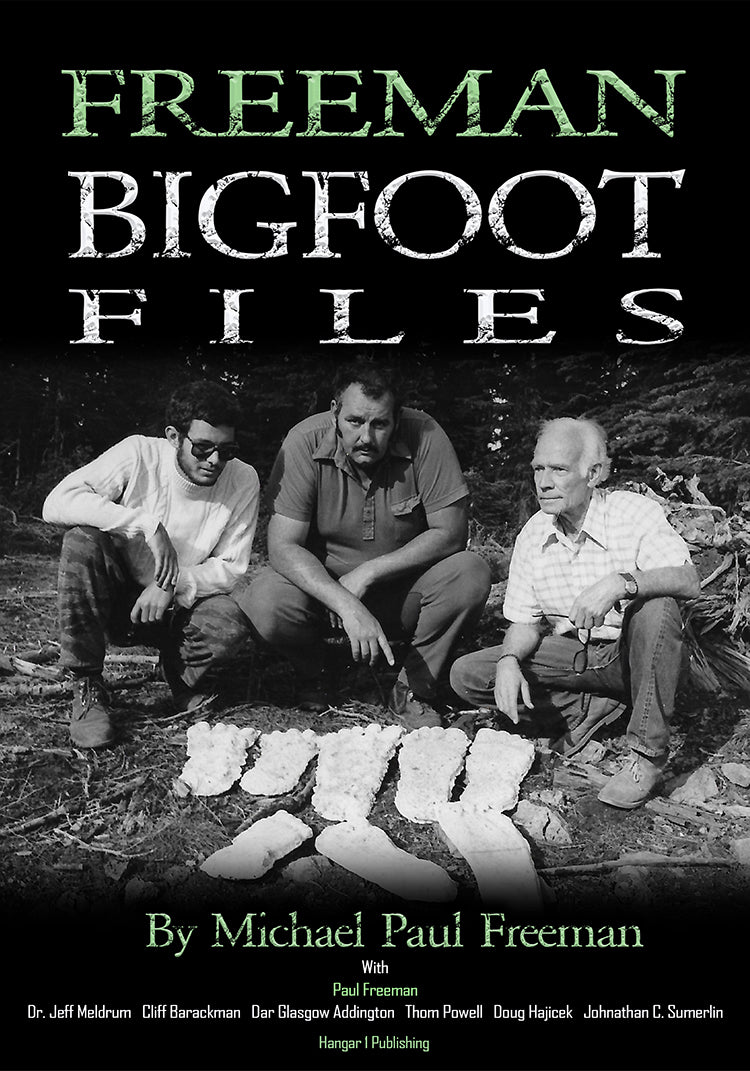Exploring the Mystery of Underground Alien Tunnels
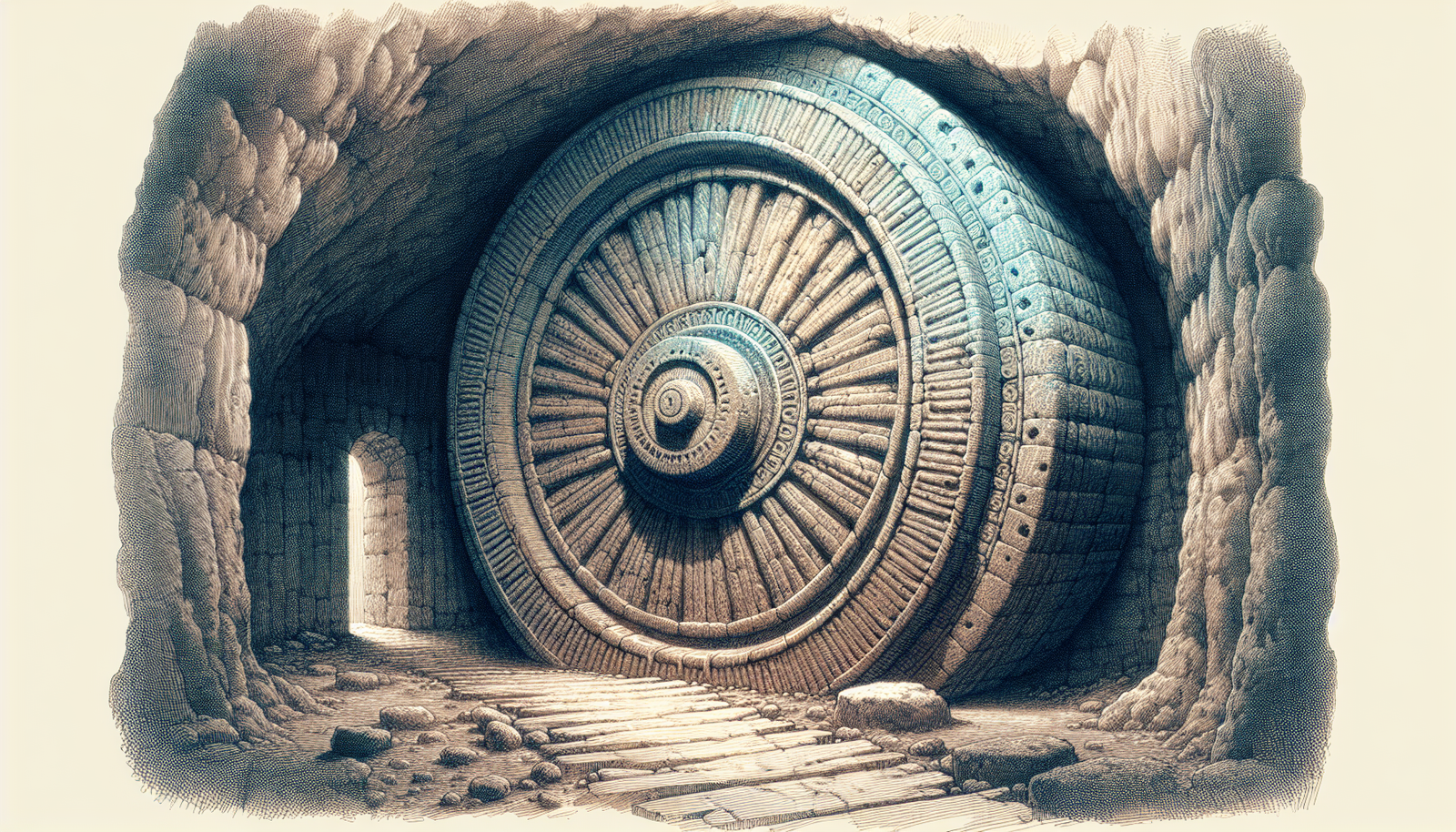
By Elaine Westfield, Ufologist
Beneath the Surface of Suspicion
What if the most profound secrets about extraterrestrial life aren't hidden in the stars, but buried deep beneath our feet? This question has haunted the imaginations of conspiracy theorists, science fiction writers, and even serious researchers for decades. The notion that advanced civilizations-human or alien-might occupy vast networks of tunnels and chambers within Earth's crust occupies a unique intersection of fear and fascination in our collective consciousness.
Tales of subterranean alien bases and mysterious tunnels stretch from ancient mythology to modern conspiracy forums, from declassified government documents to first-hand accounts by supposed whistleblowers. These stories tap into primal human anxieties about the unknown lurking just below the surface-literally beneath our feet. They blend genuine curiosities about documented underground military facilities with speculative leaps about their potential otherworldly occupants.
This article explores the complex tapestry of claims, counterclaims, historical accounts, technological possibilities, and cultural contexts that make up the Underground Alien Tunnels mystery. Rather than dismissing these narratives outright or accepting them uncritically, we'll examine the documented realities of human subterranean construction, analyze the specific locations most associated with alleged alien activity underground, and consider both historical precedents and scientific research that might inform our understanding of what could genuinely exist beneath the surface.
The Human Hand in the Earth: Documented Underground Construction
Before we venture into more speculative territory, we must acknowledge the extensive and impressive underground structures that humans have demonstrably built. These real-world examples provide context for understanding what's possible-and what might fuel more extraordinary claims.
The Cold War Imperative
The existential threat of nuclear war drove nations to dig deep during the Cold War. In Arizona and across the United States, massive underground silos housed Titan II missiles-intercontinental ballistic missiles topped with nuclear warheads capable of delivering devastation 600 times more powerful than the bomb dropped on Hiroshima.
These facilities weren't just holes in the ground; they were engineering marvels. As former missile analyst David Harutunian explained when discussing the Titan II complex, "The facility was completely self-contained. It had living quarters and a kitchen area. It has its own power and even a backup power system so they could be completely contained." The 103-foot-tall missiles sat in launch tubes protected by blast doors, while shock-absorbing "slinkies" protected the complex from the "world's worst earthquake" that would follow a nuclear detonation nearby.
Most remarkably, the U.S. government maintained 54 such sites in total secrecy until decades later. The public, while aware that nuclear missiles existed somewhere, had no knowledge of the specific locations or the extensive underground infrastructure supporting them. This silence around documented underground military installations offers a historical precedent for how large-scale subterranean projects can operate beyond public awareness.
Government Continuity and Military Operations
The U.S. government didn't just protect its offensive capabilities-it also constructed elaborate underground facilities to ensure its continued functioning even after a nuclear attack. Perhaps the most famous example is the massive bunker beneath the luxurious Greenbrier resort in West Virginia.
Hidden in plain sight, this facility was designed to house the entire United States Congress in the event of nuclear war. Completed in 1961, the bunker included dormitories for 1,100 people, a power plant, water purification systems, a hospital, and even a chamber with 435 seats-exactly matching the number of representatives in the House. Despite being operational for over 30 years, this facility remained completely unknown to the public until its exposure in 1992.
Active military facilities like the Cheyenne Mountain Complex in Colorado-a command center built inside a granite mountain-demonstrate the ongoing strategic importance of underground construction. Mount Weather in Virginia and Raven Rock in Pennsylvania (nicknamed "the underground Pentagon") serve as crucial components of national security infrastructure, housing command centers, communication hubs, and potentially vast stores of supplies and equipment.
As retired military personnel have acknowledged, these known facilities likely represent only a fraction of what exists. The full scope of underground military construction remains classified, feeding speculation about what else might exist beyond public knowledge.
The Challenge of Detection
Traditional underground construction, however, faces a significant challenge: what to do with all that dirt. A tunnel just 20 feet in diameter produces enough excavated material to fill 18 Olympic-sized swimming pools per mile. Moving such quantities typically requires an obvious surface operation with dump trucks, excavation equipment, and significant personnel.
This visibility paradox poses a crucial question: If there are indeed vast networks of secret tunnels and bases beyond those publicly acknowledged, how could they have been constructed without detection? The answer might lie in technological capabilities beyond conventional excavation methods-capabilities that, if they exist, would represent a quantum leap in our understanding of what's possible beneath the surface. The U.S. military's proven ability to maintain secrecy around underground facilities combined with the potential for revolutionary tunneling technology creates a tantalizing possibility that more exists than meets the eye.
The Technological Edge: Enabling Deeper Secrets?
The conventional wisdom about underground construction-that it inevitably produces mountains of excavated material-might not apply if certain advanced technologies have moved from theoretical possibility to practical application. One such technology has an official paper trail leading directly to the United States government.
The Nuclear Tunnel Boring Machine
In 1972, the U.S. government purchased a patent titled "Method and apparatus for tunneling by melting." This technology, sometimes called a thermonuclear subterrene, represents a radical departure from conventional boring methods. Instead of grinding through rock and creating rubble that must be removed, this device would use heat exceeding 2,000 degrees Fahrenheit to melt rock into a glass-like substance that would form the tunnel walls.
The patent describes a nuclear reactor inside the machine that would heat the drill tip, while six hydraulic cylinders with 18 million pounds of thrust would push it through the earth. As rock melted, it would cool into a glass lining along the tunnel walls-effectively eliminating the need to remove excavated material and leaving no surface evidence of the tunneling operation.
When researcher and author David Childress explains this technology, the implications become clear: "In a normal tunnelling device, you would have a lot of rubble coming out the back. And you would need tons of trucks and things like that to haul all this rubble out. But with the thermonuclear tunneling device, you don't need that. It's very clean. It doesn't create a lot of waste and rubble."
To test the plausibility of such technology, geologist Eric Drummond conducted a scaled experiment comparing traditional drilling to a plasma torch heated to the same temperature as the proposed nuclear drill bit. While the conventional drill created considerable debris, the plasma torch sliced through rock "in mere seconds," creating a clean hole lined with glass and producing no waste material. "That sells it pretty well to me," Drummond concluded. "You can scale this up very easily-in my mind, anyway-that this could create massive tunnel systems in a fraction of time with no debris."
While this doesn't prove the technology has been developed at scale or deployed, it demonstrates that the theoretical foundation exists for creating undetectable underground passages-a capability that would completely transform our understanding of what's possible beneath the surface.
The Black Budget Reality
The financial resources required for such advanced underground projects could potentially come from the classified "black budget" that funds America's most secret programs. According to defense budget analyst Todd Harrison, approximately $50 billion of the U.S. defense budget annually is "marked as being for classified programs and activities."
Military experts acknowledge that with adversaries like North Korea reportedly building thousands of underground military facilities, the strategic imperative for the U.S. to develop similar capabilities is clear. "There's no question that underground is gonna be part of warfare in the future," notes one expert. "And certainly, the U.S. Army has been investing heavily in finding ways to prepare for that."
This combination of technological possibility, financial resources, and strategic motivation creates a plausible scenario for the existence of underground facilities far beyond what is publicly acknowledged. Whether these theoretical capabilities have been realized-and whether they might involve non-human entities-remains hidden behind layers of classification and security that few eyes have penetrated.
Hotbeds of Alleged Underground Alien Activity: Case Studies
While speculation about secret underground facilities spans the globe, certain locations have become particularly associated with claims of alien presence beneath the surface. These hotspots combine documented elements of secrecy or unusual activity with witness accounts and persistent rumors that refuse to fade despite official denials.
Dulce Base, New Mexico: The Epicenter of Fear
The small town of Dulce, New Mexico, with fewer than 3,000 residents and not even a traffic light, seems an unlikely center for one of the most disturbing alien conspiracy theories. Yet this remote community on the Jicarilla Apache Reservation has become infamous among UFO researchers as the alleged location of a joint human-alien underground facility of nightmarish proportions.
The Dulce Base narrative begins in the mid-1970s when New Mexico State Trooper Gabriel Valdez investigated a series of cattle mutilations in the area. He reported finding animals with precise surgical incisions, drained of blood, and sometimes containing bizarre anomalies. "The evidence that was left there-you know, predators don't leave gas masks, glow sticks, radar chaff," Valdez stated. "They don't leave that stuff." In one particularly disturbing case, Valdez claimed to have found a mutilated cow with a dead fetus inside that "looked like a human, a monkey and a frog."
These odd findings coincided with increased UFO sightings in the region. Local resident Geraldine Julian told reporters, "The whole town of Dulce, whoever you want to talk to, they'll tell you what they've seen. It's not just a fairy tale. All the things are true, and I believe every last one of them, too, because I've seen it myself."
The narrative gained momentum when physicist Paul Bennewitz claimed to have intercepted electronic signals emanating from beneath Dulce in 1979. Bennewitz believed these signals were being sent by aliens to targets in space. His 1988 paper "Project Beta" detailed his findings and proposed methods for infiltrating what he believed was an underground facility.
The story took a darker turn with the emergence of Phil Schneider in the mid-1990s. Claiming to be a former government engineer involved in building underground bases, Schneider described a horrifying encounter during the construction of Dulce Base in 1979. According to his account, workers accidentally drilled into an existing alien facility, triggering a violent confrontation:
"We were in the process of the early stages of building. We drilled four large tunnel-like holes that some of them ran two and a half miles under the surface... What I saw? Green Beret and Black Beret people encamped inside of our geologist camp. I knew something was up."
Schneider claimed that when he descended to investigate, he encountered a seven-foot-tall Grey alien whose stench was "worse than anything he'd ever smelled before." In the ensuing firefight, Schneider allegedly killed one alien but was struck by what he called a "plasma weapon," losing several fingers and receiving injuries that would later cause cancer. According to his account, 66 people died in this "Battle of Dulce Base."
Even more disturbing are the alleged activities within the completed base. According to the Dulce narrative, the facility consists of seven levels reaching two miles underground, each dedicated to progressively more horrific research. The lowest levels reportedly house genetic experiments combining human and alien DNA, creating hybrid creatures kept in liquid-filled tubes. The sixth level, chillingly dubbed "Nightmare Hall," is said to be where human subjects undergo torturous experiments, their screams echoing through the corridors.
Despite the elaborate detail and persistent rumors, hard evidence for Dulce Base remains elusive. Skeptics point out inconsistencies in Schneider's background and military knowledge, and suggest his story contains elements of psychotic delusion. His death in 1996-officially ruled a suicide but viewed by supporters as an assassination-further complicated efforts to verify his claims.
Researchers tracing the origins of the Dulce story have identified James Bishop (alias Tao Levesque) as a primary source, with his "Hollow Earth" newsletter predating many of the specific claims. The alleged whistleblower Thomas Castello, who supposedly provided photographs of the base (including images of humans in pods that were later identified as scenes from a science fiction film), has never been proven to exist.
Yet the Dulce narrative persists, evolving and spreading despite these credibility issues. Its power lies not in verifiable evidence but in its perfect storm of elements: genuine mysteries (cattle mutilations), documented government secrecy, and deeply disturbing imagery that taps into primal fears of abduction, experimentation, and hidden horrors lurking just beneath the surface. Whether fact or fiction, the Dulce Base story has permanently etched itself into UFO lore as perhaps the most frightening allegation of underground alien activity.
Denver International Airport: Hidden in Plain Sight?
When Denver International Airport (DIA) opened in 1995, few could have predicted it would become a magnet for conspiracy theories involving underground alien bases and secret societies. Yet its combination of unusual artwork, mysterious construction elements, and vast underground infrastructure has made it a focal point for speculation about subterranean secrets.
Conspiracy theorists point to several unusual features of the airport. Its dedication capstone bears Masonic symbols and mentions the "New World Airport Commission"-a name suspiciously similar to the "New World Order" referenced in many conspiracy theories. Murals throughout the terminal depict apocalyptic scenes that some interpret as predictions of future devastation. Even the runway layout has drawn scrutiny, with claims that it resembles a swastika when viewed from above.
Beneath the terminal lies an extensive network of tunnels, originally built for an automated baggage system that famously failed. These tunnels, along with the underground trains that carry passengers between concourses, provide the infrastructure for theories about deeper, more secretive levels beneath.
Stacey Stegman, the airport's SVP of communications, has addressed these theories directly: "We served almost 78 million passengers last year, do people think we can hide secret bunkers and alien testing from them, as well as the 40,000 people who work here? That's pretty brilliant if we could."
Unlike most targets of conspiracy theories, DIA has embraced its reputation, hosting exhibits about the theories and even installing a talking animatronic gargoyle that jokes with passengers about the rumors. This playful approach has paradoxically fueled further speculation, with some theorists suggesting it's an attempt to normalize the sinister truth through humor.
While there's no evidence of alien presence beneath DIA, the airport demonstrates how documented underground construction-combined with unusual aesthetic choices and hints of symbolism-can become a breeding ground for theories about deeper, darker secrets below the surface. The continuing fascination with DIA highlights how the underground realm remains a canvas onto which we project our fears, suspicions, and imagination.
Area 51: The Desert's Underground Secrets
No discussion of alleged alien facilities would be complete without mentioning Area 51, the classified U.S. Air Force base in Nevada that has become synonymous with government UFO secrecy. Though its existence was only officially acknowledged in 2013 following a Freedom of Information Act request, Area 51 had been the subject of speculation and rumor for decades.
The documented secrecy surrounding the base-including restricted airspace, armed guards, and "use of deadly force authorized" warnings-provided fertile ground for theories about what might be happening not just on the surface but beneath it. Locals have reported seeing convoys of military vehicles "disappearing" near the base, fueling speculation about entrances to vast underground tunnel networks.
Mining expert Christian Grönau, who works in the region, suggests that Area 51's most sensitive operations have moved underground since the 1970s: "Area 51, what you see like, on Google imagery, that was the '50s, '60s, and '70s. Since then, they've gone down. Everything they do is underground."
Grönau and others propose that the massive amount of excavated material from these alleged underground expansions is disguised through "heap leaching" at nearby mines. This process, which uses mercury and cyanide to break down ore into a slurry that can be pumped away, would theoretically allow for the disposal of thousands of tons of excavated rock without obvious surface evidence.
The speculation about Area 51's underground component intersects with persistent claims about recovered alien spacecraft and bodies, particularly from the alleged 1947 Roswell incident. The theory holds that these materials were transported to Area 51 for study and reverse-engineering, with the most sensitive work occurring in deep subterranean labs shielded from both radiation and surveillance.
While the U.S. government has acknowledged that Area 51 was used to develop secret aircraft like the U-2 spy plane and the SR-71 Blackbird-explaining many of the UFO sightings in the area-it has never addressed claims about underground facilities or alien technology. This official silence, combined with the base's remote location and extreme security measures, ensures that Area 51 remains a blank slate onto which theories about underground alien collaborations continue to be projected.
The combination of verified secrecy, technological capability, and persistent witness accounts creates an enduring mystery. While skeptics note that the logistics of maintaining both secrecy and life support for extensive underground facilities would be enormously challenging, believers counter that the technological capabilities of the U.S. military-particularly with potential alien assistance-could overcome these obstacles. Without definitive evidence either way, Area 51's underground secrets remain tantalizingly out of reach, yet too compelling to dismiss entirely.
Ancient Earth, Ancient Tunnels: Echoes of Extraterrestrial Intervention?
The mystery of underground alien tunnels extends beyond modern conspiracy theories into the ancient past. Archaeological discoveries of sophisticated subterranean structures, combined with mythological accounts of underground beings, raise intriguing questions about whether extraterrestrial influences might have shaped humanity's earliest underground endeavors.
The Subterranean Sanctuaries of Cappadocia, Turkey
In 1963, a home renovation in the Turkish town of Derinkuyu led to an astonishing discovery: a passage to an ancient underground city extending up to 280 feet beneath the earth. This vast complex, estimated to have housed up to 20,000 people, included living quarters, storage rooms, schools, wineries, and even stables for livestock. Perhaps most remarkably, the city featured sophisticated ventilation shafts and water wells that would have allowed inhabitants to survive underground for extended periods.
While conventional archaeology attributes these structures to peoples like the Phrygians or Hittites around 800 BCE as protection from invasion, some researchers suggest they may be much older. Turkish archaeologist Omer Demir reportedly found Paleolithic tools within the caves, potentially dating them to 10,000-12,000 BCE or earlier-during the last ice age.
Ancient astronaut theorists connect these underground cities to the Zoroastrian sacred text known as the Vendidad. In this text, a sky god named Ahura Mazda-described as descending "from the sky in a vehicle with fixed wings"-instructs a ruler named Yima to build an underground sanctuary called a "Vara" to protect people and animals from a devastating winter.
"Ahura Mazda was known to have descended from the sky in a vehicle with fixed wings. It looks like some type of flying device," explains Giorgio Tsoukalos, suggesting an extraterrestrial origin for this ancient account.
The alleged correspondence between the textual description of the Vara and the actual structure of Derinkuyu is striking. Both are described as multi-level underground shelters designed to house large populations and livestock during a catastrophic environmental event. The defensive features of Derinkuyu, such as the massive stone doors that could only be opened from the inside, suggest the inhabitants were hiding from a significant threat.
An even more extensive underground city discovered near Nevsehir in 2014 has further fueled speculation. Covering approximately five million square feet and extending 370 feet underground, this city was connected to Derinkuyu by a 7-kilometer tunnel. The scale of these undertakings-particularly if they are indeed as old as some researchers suggest-raises questions about how ancient peoples could have accomplished such feats without advanced knowledge or assistance.
Whether these remarkable structures were built with extraterrestrial guidance or represent purely human ingenuity, they demonstrate that extensive underground habitation is not merely a modern concept but has roots stretching back thousands of years. The mystery of their true age and purpose ensures they remain a cornerstone of theories about ancient underground civilizations and potential alien intervention.
Native American Legends: Beings from Below
Native American mythology contains numerous accounts of underground worlds and their inhabitants, many of which bear intriguing parallels to modern descriptions of alien beings. These legends span tribes across the American Southwest, including the Hopi, Apache, Zuni, and Pueblo peoples.
What makes these accounts particularly striking is their deviation from the common human migration narrative. As one tribal representative explained, "When we're talking about our origin, and you hear the stories about us coming down from Alaska through the Bering Strait, but what we believe is we came out from the ground."
The Hopi of Arizona tell of ancestors who escaped a deadly "storm of falling stars" with the help of beings called the Ant People, who guided them to safety deep within the earth. In another account, they were protected from "storms of fire and ice" by these same beings. The physical description of the Ant People-with large eyes and heads and small, thin bodies-bears an uncanny resemblance to the "Grey" aliens described in modern abduction accounts.
Researcher David Hatcher Childress notes, "The Hopi Indians survived cataclysms by living in this underground world with the ant people for a certain period of time, and then eventually they emerged from the underground world back into the surface world."
These parallels have led some researchers to speculate that the Ant People and similar figures in indigenous mythology might represent early contact with extraterrestrial or non-human intelligent beings who utilized underground bases or tunnels. The geographic overlap between these ancient legends and modern UFO hotspots-particularly around Dulce, New Mexico-adds another layer of intrigue to these connections.
While conventional anthropology interprets these as creation myths or symbolic stories, the specificity of the accounts and their persistence across different tribes suggest they might contain kernels of historical memory-perhaps of a time when humans encountered beings who lived or sought refuge beneath the surface. Whether these beings were extraterrestrial in origin or represent some other form of intelligence remains an open question, but the legends themselves provide a fascinating glimpse into how underground realms have long been associated with non-human entities in human consciousness.
Europe's Mysterious Erdstall Tunnels
Across Europe, primarily in Germany, Austria, and France, archaeologists have discovered thousands of narrow underground passages known as Erdstall tunnels. Dating to the medieval period, these mysterious structures feature tight crawlspaces connecting small chambers, often requiring visitors to squeeze through openings barely wider than a human body.
What makes these tunnels particularly puzzling is their apparent impracticality. Too small for storage or habitation, too elaborate for simple drainage, and lacking historical documentation explaining their purpose, the Erdstall tunnels have bewildered researchers for decades.
Raimund Edlinger, a robotics expert who has mapped these structures using advanced technology, describes their claustrophobic nature: "To move from one level to another, an intrepid explorer must squeeze through openings barely large enough for a single person."
Conventional theories suggest the tunnels might have served as temporary hiding places, granaries, or occasional shelters from harsh weather. However, the absence of artifacts, the lack of written records, and the sheer number of these tunnels have allowed more speculative interpretations to flourish-including the suggestion that they might be "relics of long-departed aliens."
While there's no direct evidence connecting the Erdstall tunnels to extraterrestrial activity, they exemplify how unexplained underground structures throughout history continue to fuel imagination and speculation. Their mysterious origins and purpose create a vacuum that various theories-from the mundane to the extraordinary-attempt to fill. Like many ancient underground sites, these European tunnels remind us that the subterranean realm has long held a special significance for humanity, whether as refuge, ritual space, or something else entirely that has been lost to history.
The Scientific Search for Subsurface Life: Terrestrial "Aliens"?
Moving from speculation to science, researchers are making remarkable discoveries about life deep beneath Earth's surface-findings that might inform our understanding of both terrestrial evolution and the potential for life on other worlds. These studies reveal that the subsurface realm, far from being lifeless, hosts unique organisms that have adapted to conditions once thought incompatible with life.
In the depths of the Naica Caves in Mexico, nearly a thousand feet below the surface, astrobiologist Penny Boston made an astonishing discovery. Wearing special ice-packed suits to withstand temperatures reaching 150°F, she and her team explored crystal chambers where massive white pillars larger than telephone poles stretched from floor to ceiling.
But it wasn't just the spectacular crystals that interested Boston-it was what might be living inside them. "The more important thing than the giant crystals to me-although they were spectacular-was that a fellow scientist said, 'I think we're seeing microbial shapes in little pockets within these crystals.' And I'm like, 'Oh my gosh.'"
Boston collected samples from these crystals, which had been sealed within the cave for tens of thousands of years. Back in her lab, she successfully revived and cultured microorganisms that had been dormant within the crystal formations. "Lo and behold, on that first expedition I got a lot of things growing," she reported.
These weren't ordinary microbes. Boston describes them as having "wild, fanciful shapes. Things that look like beads on a string. The shape we call hairy sausages. There are some that look like little micro chrysanthemums. We have star-shape guys. We have cubes." Perhaps most striking were what she called "death stars"-"giant things with lots of appendages sticking off them."
Similarly, in the Romanian Movile Cave-sealed for an estimated 5.5 million years-scientists have discovered an ecosystem entirely independent from the surface world. Here, in an atmosphere rich in hydrogen sulfide and carbon dioxide but poor in oxygen, over 48 species thrive in total darkness, including 33 found nowhere else on Earth. These creatures, including water scorpions, worms, and blind, translucent spiders, survive through chemosynthesis rather than photosynthesis, deriving energy from chemical reactions rather than sunlight.
Geobiologist Cara Magnabosco studies ancient microorganisms found in water trapped miles below Earth's surface. Some of these waters have been isolated for up to a billion years, hosting microbes that evolved independently from surface life. "What we see in this water as it gets older is that the cell numbers are going down," Magnabosco explains. "The microbial population sizes are decreasing quite a bit. In this old water, the amount of [living] cells per milliliter can be tens of thousands times lower than what we see in the ocean."
These discoveries have profound implications for astrobiology-the search for life beyond Earth. Scientists studying these extremophiles believe similar life forms might exist on other worlds with subsurface water, such as Mars or the ice-covered moons of Jupiter and Saturn like Europa and Enceladus.
Kevin Hand, an astrobiologist at NASA's Jet Propulsion Laboratory focused on Europa, explains: "If we've learned anything about life on Earth, it's that where you find liquid water, you generally find life. And Europa has got two to three times the total of, total volume of all the liquid water found in Earth's ocean."
While these scientific investigations focus on microbial or simple multicellular life rather than intelligent beings, they establish a crucial fact: the subsurface realm is not inherently hostile to life but rather hosts unique evolutionary paths. This understanding transforms the underground from a purely theoretical hiding place for speculative entities into a scientifically validated habitat-albeit one with conditions and inhabitants very different from what we're accustomed to on the surface.
The existence of these "alien" ecosystems deep within our own planet reminds us that extraordinary forms of life might be much closer than we imagine-not necessarily traveling from distant stars, but evolving beneath our very feet in environments we're only beginning to explore and understand.
The Shifting Paradigm: Earthbound Mysteries
Recent academic work has begun to challenge the traditional extraterrestrial hypothesis for Unidentified Anomalous Phenomena (UAPs), proposing instead that some unexplained phenomena might originate not from outer space but from within Earth itself. This emerging perspective provides a theoretical framework that bridges conventional science and more speculative ideas about non-human intelligence potentially utilizing underground realms.
In June 2024, researchers from Harvard University and the University of Montana published a controversial paper titled "The Cryptoterrestrial Hypothesis: A Case for Scientific Openness to a Concealed Earthly Explanation for Unidentified Anomalous Phenomena." This academic work, which attracted substantial attention with over 175,000 downloads, proposes alternative explanations for UAPs beyond the common assumption that they represent visitation from other planets.
The cryptoterrestrial hypothesis suggests several possibilities: UAPs might be operated by an ancient, highly advanced human civilization that predates our known history; they could belong to an intelligent species that evolved on Earth separately from humans (such as hypothetical advanced descendants of dinosaurs); they might be controlled by humans from the future studying their own past; or they could even represent what the authors controversially term "earthbound angels"-beings with a more spiritual or interdimensional nature.
Crucially for our exploration of underground alien tunnels, the paper specifically proposes that these hypothetical cryptoterrestrial beings "could reside somewhere inside the Earth or under the oceans." This academic speculation provides a theoretical basis for considering the possibility of advanced non-human intelligence originating from and potentially still inhabiting Earth's subsurface regions.
Co-author Michael Masters defends the paper's approach: "The main point with any theoretical [UAP] work like this is to make the case for scientific openness. We wanted to initiate a discussion between our scientific colleagues, and to get the topic discussed more in the media."
While skeptics like philosopher David Kyle Johnson criticize such theories as unnecessary speculation, Masters counters that scientific inquiry requires exactly this kind of bold hypothesis-generation: "We're supposed to be asking these questions-especially about things like UFOs that don't have a clear explanation. It's our job to find those explanations."
This emerging academic discourse demonstrates how the idea of intelligence originating from within Earth rather than from distant stars is gaining traction in more mainstream scientific circles. By proposing that advanced beings might exist not above but below us-potentially utilizing extensive underground systems-the cryptoterrestrial hypothesis provides a conceptual bridge between documented scientific findings about subsurface environments and more speculative narratives about non-human underground presence.
Whether or not these specific theories prove correct, they illustrate how our understanding of what might exist beneath the surface continues to evolve, incorporating new scientific insights while remaining open to possibilities that challenge conventional wisdom about the origins and nature of intelligence on our planet.
Weaving the Narrative: Why Underground Tunnels?
The persistent fascination with underground alien tunnels transcends mere conspiracy theory-it taps into powerful psychological and cultural currents that shape how we perceive the unknown. Understanding why this particular narrative has such staying power provides insight into both its appeal and its function in our collective imagination.
The Symbolism of the Underground
The underground realm has served as a powerful symbol across human cultures and throughout history. It represents the hidden, the mysterious, the literally beneath-the-surface reality that contrasts with the visible world above. From ancient mythologies featuring underworld domains to modern films portraying subterranean horrors, the underground consistently embodies what lies beyond ordinary perception-a perfect setting for stories about concealed truths and hidden powers.
In John Carpenter's 1988 film "They Live," the hero discovers a network of tunnels beneath Los Angeles where aliens monitor and control the human population above. This fictional portrayal captures a recurring theme in underground alien narratives: the notion that what happens below secretly determines events on the surface. As blogger Jordan M. Poss notes, "tunnels allow the conspiracy to unfold both here and somewhere else at the same time," creating a perfect narrative device for explaining how extraordinary activities could remain hidden from everyday awareness.
This symbolic potency explains why underground settings feature so prominently not just in alien narratives but in conspiracy theories more broadly. They provide a literal manifestation of the metaphorical "deeper truth" that conspiracy theorists claim to perceive beneath official explanations-the perfect setting for stories about powers operating beyond public view and control.
Plausibility and Non-Falsifiability
Underground tunnels offer a unique advantage to speculative narratives: they combine plausibility with non-falsifiability. We know extensive tunnel networks exist-from subway systems to military bunkers to mining operations-making the basic concept of underground construction entirely realistic. Yet most people lack direct access to these spaces, particularly those under military or governmental control, making claims about their true extent or purpose difficult to disprove definitively.
When witnesses report seeing military vehicles "disappear" near Area 51, or when Jicarilla Apache residents describe strange vents and sounds on Archuleta Mesa near Dulce, these observations gain power precisely because they occur at the threshold between the visible surface world and the inaccessible underground. The observer sees something unusual at the entrance to the unknown, leaving the rest to imagination and speculation.
This combination creates a perfect storm for persistent conspiracy theories. The core premise (extensive underground construction) is demonstrably real, while the specific claims (alien presence, horrific experiments) remain sheltered from scrutiny by their alleged location in inaccessible subterranean realms. Even when specific pieces of "evidence" are debunked-like the supposed photograph of humans in pods at Dulce Base that turned out to be from a science fiction film-the broader narrative remains intact, protected by its underground setting from definitive refutation.
The Intersection of Human and Non-Human Endeavors
Perhaps most intriguingly, stories of underground alien tunnels typically feature collaboration between human military/government entities and non-human beings. This intersection reflects a deep-seated anxiety about authority figures potentially acting against the interests of ordinary citizens, particularly in concert with powerful outside forces.
In these narratives, the military-industrial complex that President Eisenhower famously warned about becomes even more threatening when allied with literally inhuman partners. The underground setting physically separates these collaborative activities from public oversight, mirroring the perceived separation between classified government operations and democratic accountability.
This blending of human and alien elements also allows the narratives to incorporate documented realities (military secrecy, black budgets, underground bases) alongside more speculative elements (extraterrestrial beings, advanced technology, sinister experiments). The result is a narrative ecosystem where fact and fiction coexist and cross-pollinate, creating stories that resist simple categorization as either entirely true or wholly false.
The power of underground alien tunnel narratives lies precisely in this ambiguity-their ability to occupy the shadowy territory between verified reality and pure fantasy, between rational skepticism and open-minded wonder about what might exist beyond our conventional understanding. Like the tunnels themselves, these stories connect the known world to realms of possibility that continue to captivate our imagination, regardless of whether they ultimately lead to truth or dead ends.
Beneath the Surface Remains the Mystery
Are Underground Alien Tunnels a reality, or a manifestation of our collective fears and fascination with the unknown and the hidden? After exploring documented human underground construction, potential advanced tunneling technology, specific locations with alleged alien activity, ancient connections, scientific exploration of subsurface life, and emerging cryptoterrestrial hypotheses, we return to this fundamental question without a definitive answer.
What we can say with certainty is that extensive underground networks built by humans exist, from missile silos and government bunkers to ancient cities and mysterious passageways. We know that classified military budgets fund projects beyond public knowledge, and that theoretical technologies like the thermonuclear subterrene could potentially enable undetectable tunneling operations. We've learned that life thrives in extreme underground environments once thought uninhabitable, and that academic researchers are beginning to propose alternatives to extraterrestrial explanations for unexplained phenomena.
Yet between these documented facts and the elaborate narratives of underground alien bases lies a vast gray area where verification remains elusive. The most sensational claims-of joint human-alien facilities where horrific experiments occur, of recovered spacecraft hidden in subterranean vaults, of ancient non-human beings dwelling beneath sacred mountains-lack the concrete evidence that would transform them from compelling stories to established reality.
Perhaps this persistent uncertainty is itself the most interesting aspect of the Underground Alien Tunnels mystery. In an age of unprecedented information access, when satellite imagery can show us any point on Earth's surface and when whistleblowers can instantly share classified information globally, these purported subterranean realms remain tantalizingly beyond our reach-spaces where imagination and speculation can still flourish relatively unconstrained by empirical verification.
This quality makes Underground Alien Tunnels more than just a conspiracy theory; they represent a modern mythology responding to very real aspects of contemporary life: government secrecy, military power, technological advancement, and the human relationship with the unknown. Like the mythological underworlds of ancient cultures, these narratives help us process anxieties about forces beyond our control operating beneath the surface of everyday experience.
Whether physical tunnels housing non-human entities exist beneath our feet remains unproven. But the psychological tunnels these stories create-connecting documented reality to speculative possibility, linking ancient myths to modern fears, bridging rational analysis and imaginative wonder-undoubtedly exist and continue to shape how we perceive the mysteries that surround us. In this sense, the true significance of Underground Alien Tunnels may lie not in their literal existence but in what our fascination with them reveals about the human need to explore, explain, and occasionally fear what lies beneath the surface of our understanding.
From Bigfoot to UFOs: Hangar 1 Publishing Has You Covered!
Explore Untold Stories: Venture into the world of UFOs, cryptids, Bigfoot, and beyond. Every story is a journey into the extraordinary.
Immersive Book Technology: Experience real videos, sights, and sounds within our books. Its not just reading; its an adventure.





